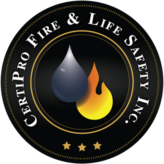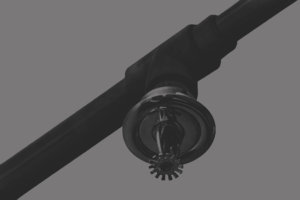The most important aspect of any building’s Fire Protection system is its water supply.
But not all water is created equal, as your building’s fire system is on a separate fill from the rest of your building. This separate water line may not be monitored either, so the water supply could be shut off and you wouldn’t be aware of it.
Below, we’ll outline why this might occur and the number one way to prevent a fire in any building.
Your Fire System water pressure gauge may be lying to you
As an example, you may be the Property Manager and due to outside construction in the area, the city had to shut a water valve down temporarily. However, they forgot to open one valve back up on the main water line.
Now your water supply would be shutoff to your buildings entire fire system!
Understanding there may be construction in the area, you should check your water supply pressure gauge for any signs of water restriction. Your gauge is reading 100 PSI so you figure that your water supply must not be affected.
Except… that’s not exactly how it works.
The gauge can still read 100 PSI and have zero water pressure behind it
Your fire system water supply is not monitored like the water used for drinking and plumbing (domestic water). Instead, it is monitored by something known as water pressure gauge.
Although this gauge seems straightforward, it does not give an accurate representation of a viable water supply for your fire system.
This is because the water that is sitting in your fire sprinkler system pipes is still pressurized from when the water was on, creating what we will call ghost pressure.
There is no way of telling if your fire system water is shut off besides opening up the drain valve
Once the drain valve is open, the ghost pressure water will drain from the system, allowing you to test your system accurately.
If your fire system water supply is fully flowing, the gauge will drop down from 100 PSI to about 90 PSI ( 10 pounds). As soon as you shut the drain valve, the PSI will go back to 100 PSI.
If your water supply is obstructed or a valve is not open at the main water line, it is going to drop down to 0 PSI. Or, if it is partially shut, it is going to go down to about 40 PSI. This means you are not going to have full flow to your buildings Fire Sprinkler system, which could mean disaster.
The worst case scenario for your building can be avoided with Annual, Semi-Annual or Quarterly Fire Sprinkler inspections
If this goes unchecked, and in the event of a fire, the fire sprinklers will not have enough pressure to spray water because the water is shutoff.
Your insurance company can then find you at fault by avoiding inspections. But, the good news is that Fire System Inspections transfer that liability to your fire system service provider.
The NFPA 25 recommends quarterly inspections of water supply flow (every 3 months), although some people prefer to take the risk of having their fire sprinkler system inspected annually, which is the minimum recommendation from the NFPA.
If it has been a while since you thought about your buildings fire protection plan, we can assist you in staying up to date with these tips for keeping your fire suppression system up-to-code.


